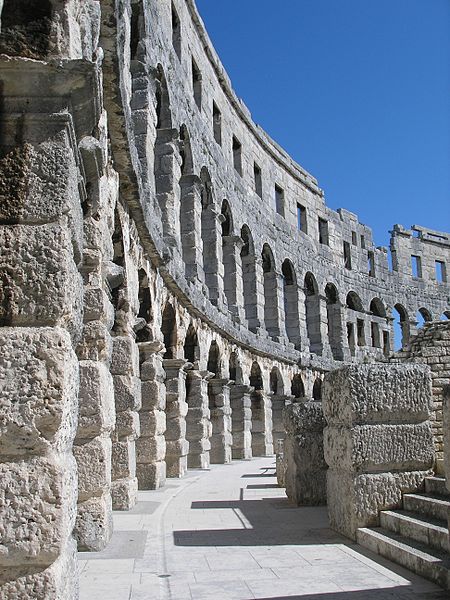When you think of Croatian cities the likes of Split, Dubrovnik and Zagreb probably spring to mind. Have you ever considered visiting Pula though? Its location on the coast of the Istrian peninsula means there are some outstanding beaches within easy reach, while the city itself is home to a wide range of historical sites.
In fact, Pula’s history goes back almost 3,000 years and it boasts several well preserved Roman buildings that attest to its importance in centuries gone by. If this has got your attention, take a look at the holidays in Pula – and elsewhere in Croatia – that you can book with Cosmos.
Pula’s historical attractions
Although Pula was originally constructed by the Illyrians, it was the Romans who had the biggest impact on its development. Many buildings dating from this period can still be seen today, making the city a great spot for history buffs to discover.
The Arena – the sixth largest Roman amphitheatre still standing in the world – is one of the main draws. Situated in a position overlooking the harbour, the 30 m high walls of this structure are certainly imposing and within the arena itself some 20,000 spectators used to gather to watch gladiatorial battles.
During the summer, this amphitheatre is used for theatrical and musical performances and in July it is definitely a case of old meets new when it plays host to the Croatian Film Festival.
Another site that was important during the Roman era is the Forum – although this now looks very different to how it would have done when the Italians ruled the area. The main city square is located here, with its 10th century town hall the main feature, and it’s also where you can see the Temple of Augustus.
To learn more about Pula’s past, spend a couple of hours in the Archaeological Museum which predominantly focuses on the period from the 2nd century BC to the 6th century AD, while there are also exhibits relating to the Middle Ages in the establishment.
The St Francis Church and Monastery is also worth exploring, having been constructed in the 14th century by the Franciscan community. Its design is simple and the complex has a sense of tranquility – it’s somewhere for quiet contemplation and a few moments away from the busy streets.
Pula’s natural attractions
With all the historical sites to explore in Pula it can be easy to get caught up in sightseeing and neglect some of its wonderful natural attractions. You don’t have to go far to discover some of this striking scenery, with the coastline around Pula dotted with gorgeous bays and secluded coves.
Simply soak up the sunshine on the sand or, if you’d like to get active, have a go at water sports like snorkelling, windsurfing and scuba diving, all of which are on offer in the area.
If you don’t mind travelling a little further afield, head to the outstanding beaches of Kamenjak, which are around 8 km from Pula. Alternatively, you can take a tour to the nearby Brijuni archipelago – a group of islands that is protected by a national park.
There are some exclusive resorts on the islands, as well as a number of peaceful beaches where you can relax surrounded by nature. There is also a golf course here where you can play a round in a spectacular setting and on an unusual course that boasts features like sand greens, bunkers and woodland.


